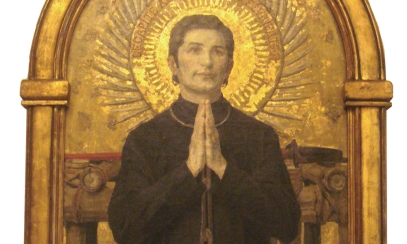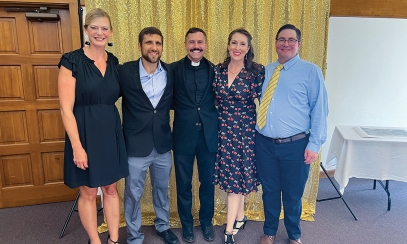
St. Conrad: A Gracious, Hospitable Miracle Worker
Corrado Confalonieri (Conrad) and his wife, Euphrosina, were one of Italy’s noblest families in the early 14th century when a forest fire changed their destiny. Conrad was hunting and had ordered his servants to set fire in a thicket to drive the game out of the woods.
Corrado Confalonieri (Conrad) and his wife, Euphrosina, were one of Italy’s noblest families in the early 14th century when a forest fire changed their destiny. Conrad was hunting and had ordered his servants to set fire in a thicket to drive the game out of the woods.
The fire destroyed surrounding fields and left many homeless. One poor villager who had lost his home and was picking up sticks near the fire was accused of arson and sentenced to death. Rev. Clifford Stevens writes in The One Year Book of Saints that as the man was being led to his execution, Conrad confessed he was responsible for the fire and all the damage. He was ordered to make good the damage and as a result, lost all of his property and his wife’s dowry. As Conrad and his wife pondered what had happened, they saw the hand of God. They decided to make a radical change from their wealthy life to one of saintly solitude. In 1315 they agreed to separate.
Conrad joined a community of hermits who were Franciscan tertiaries near the town of Calendasco. Euphrosina entered the Poor Clares of Piacenza. Conrad soon developed a reputation for holiness and sanctity and large crowds were attracted to him.
To avoid attention, he moved to Noto in Sicily where he lived an itinerant life for several years. In 1343 Conrad moved to Netum where he cared for the sick at the Hospital of St. Martin and lived in a hermitage attached to the Church of the Crucified Christ.
During this time God gave him the gift of miracles. People suffering from various illnesses flocked to him to be cured. He was described as being gracious and hospitable with a delightful sense of humor. The miracle for which Conrad is best known as the “Miracle of the Bread,” which happened during the famine that afflicted Sicily as a result of a severe outbreak of the bubonic plague in 1348-49. During that time, anyone who approached the hermit for help was given a loaf of bread, still warm. It was said he had received the bread from angels.
His last years were spent in a grotto outside of Noto where he died on Feb. 19, 1351. He has been invoked against hernias since his death with such ailments having been cured in those praying at his tomb. He was buried in the church of St. Nicholas in Noto and his tomb became a place of pilgrimage.
Pope Leo X beatified Conrad on July 12, 1515. He was canonized by Cardinal Odoardo Famese in 1544 in a solemn ceremony at the cathedral of Piacenza. On his feast day, the parish church of San Corrado in Noto commemorates him by the distribution of blessed bread.
The town of Noto celebrates the feast of St. Conrad of Piacenza twice a year in February and August. On Feb. 19, the silver urn containing the remains of the saint is carried in procession through the streets of Noto. Preceding the urn are people holding large decorative candles which represent the history of the saint’s life, the marching band and the faithful who make the barefoot journey from their town to Noto’s historical center.
Mary Lou Gibson is a freelance writer who loves to explore the lives of saints. She is a member of St. Austin Parish in Austin.



